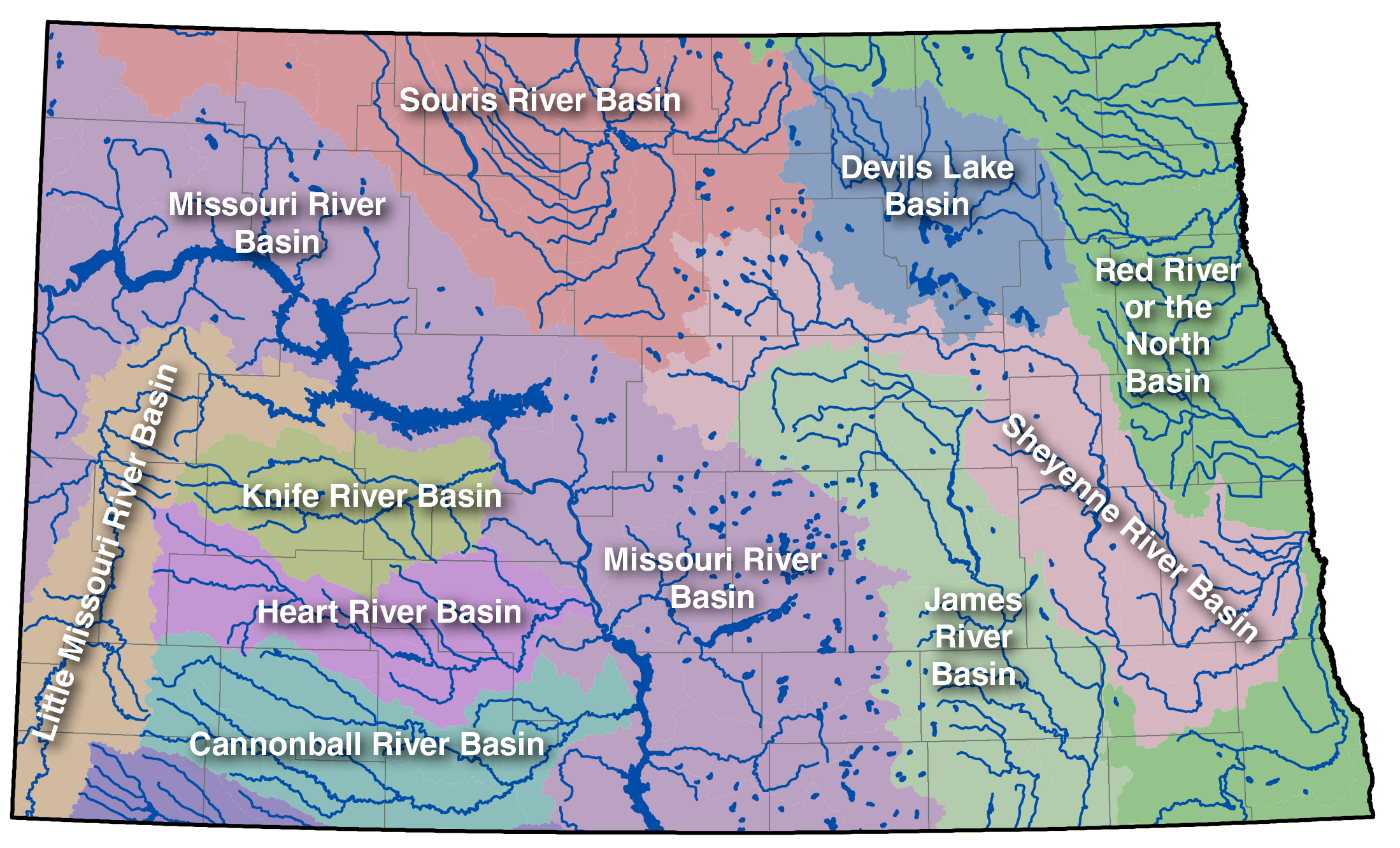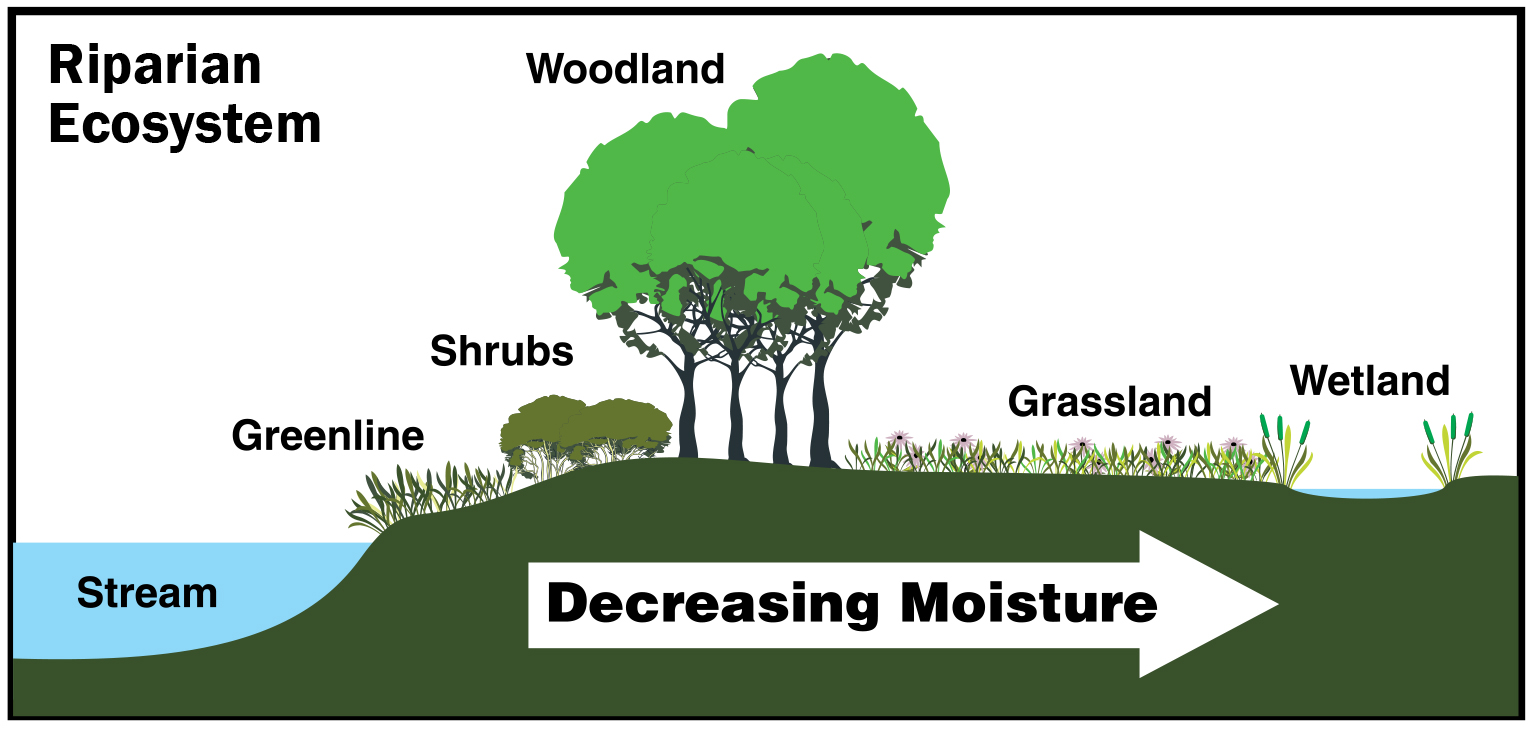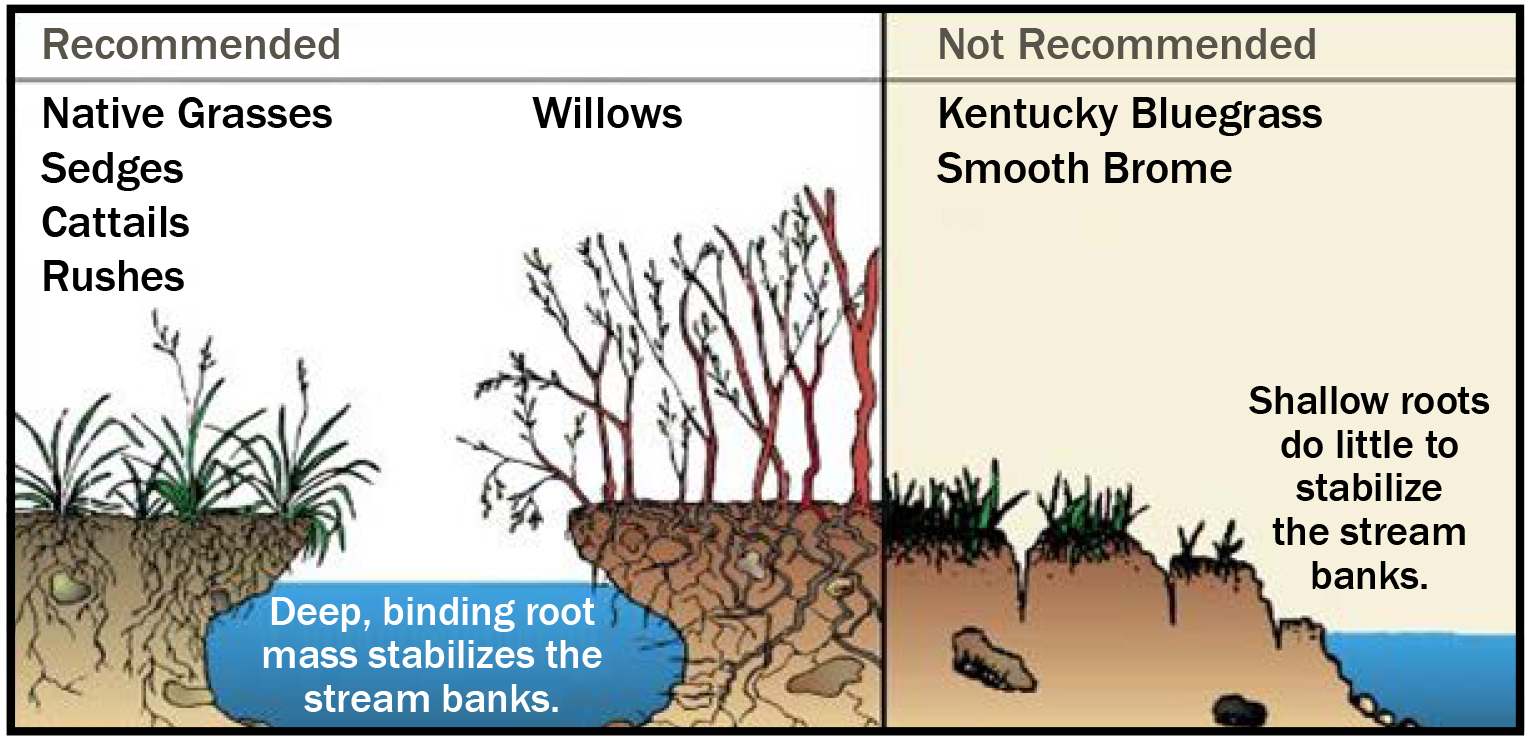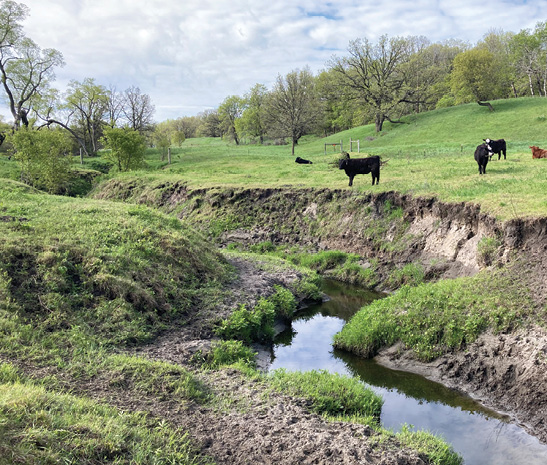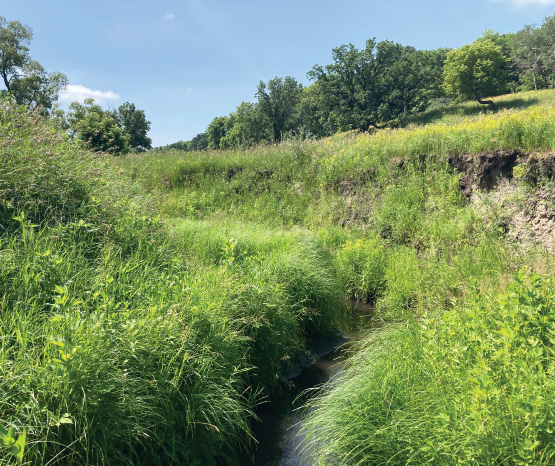Livestock often are attracted to riparian systems due to the availability of forage, water, shade and smooth terrain. Riparian ecosystems are extremely productive, producing a high volume of forage in proportion to their size. Grazing riparian areas is often viewed negatively because improper grazing can lead to changes in riparian vegetation, resulting in increased erosion, loss of biotic diversity, degradation of wildlife habitat, reduced water quality and alterations in stream hydrology. However, research indicates that managed grazing can be used to enhance riparian health. Grazing can help maintain invasive perennial grasses, which are desirable forage species. Proper grazing management allows the riparian vegetation time to rest and recover prior to high flow events that occur in the fall and early spring in the region (Figure 4). Research being conducted at North Dakota State University has found that grazing has the potential to restore riparian ecosystems by increasing floodplain access and extent with no negative impacts on the composition and extent of riparian plant communities. Implementation of proper grazing management practices are critical to prevent degradation by livestock and improve riparian health and proper function.
Figure 4. a) Riparian area on May 22, 2022, at the end of the spring grazing period.
Figure 4. b) The same riparian area on July 6, 2022. Early removal of grazing livestock allowed vegetation to regrow and provide protection during fall and early spring flood events.
For more information on this and other topics, see: www.ag.ndsu.edu
The NDSU Extension does not endorse commercial products or companies even though reference may be made to tradenames, trademarks or service names. NDSU encourages you to use and share this content, but please do so under the conditions of our Creative Commons license. You may copy, distribute, transmit and adapt this work as long as you give full attribution, don’t use the work for commercial purposes and share your resulting work similarly. For more information, visit www.ag.ndsu.edu/agcomm/creative-commons.
County commissions, North Dakota State University and U.S. Department of Agriculture cooperating. NDSU does not discriminate in its programs and activities on the basis of age, color, gender expression/identity, genetic information, marital status, national origin, participation in lawful off-campus activity, physical or mental disability, pregnancy, public assistance status, race, religion, sex, sexual orientation, spousal relationship to current employee, or veteran status, as applicable. Direct inquiries to Vice Provost for Title IX/ADA Coordinator, Old Main 201, NDSU Main Campus, 701-231-7708, ndsu.eoaa@ndsu.edu. This publication will be made available in alternative formats for people with disabilities upon request, 701-231-7881.
